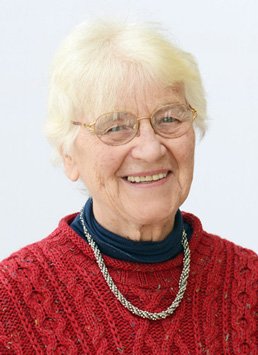Society for the Study of Women Philosophers, Inc.
a non-profit, tax-exempt educational charity 501(c)3 Internal Revenue Code
Mary Fairfax Grieg Somerville
1780-1872
Metaphysics, Philosophy of Science,
Philosophy of Mathematics
|
Kate Lindemann's Women Philosophers pages |
 |
Remember!! Your purchase of books by clicking on Abe Books or Amazon links through this site earns us a small commission that is used to provide travel scholarships. |
Mary Fairfax Somerville was not offered an early education and yet she became one of the outstanding scholars of all time. in 1869 she was elected to the American Philosophical Association, just one of the many honors bestowed on her.
Chronology
1780 Mary Fairfax Somerville was born in Scotland on December 26, 1780 to Margaret Charters Fairfax and her husband, Lieutenant William George Fairfax, a vice admiral in the British navy. The couple were held in regard by the community.
Mary did not receive early training or formal education. She spent much of her time exploring the surrounding area and she learned domestic skills. She also read the Bible.
1793 She started at an Edinburgh boarding school. This was her first exposure to formal education.
She taught herself to read Latin and she read Caesar's Commentaries. An article in a magazine for women gave Mary her first taste of formal mathematics. She was so taken with what she read that she asked her brother's tutor to buy her a copy of Euclid so she could understand the meaning of the symbols.
It was fortunate for all of us that Mary Fairfax saw that magazine and had the courage to approach her brother's tutor since went on to become one of the major mathematicians of all time.
1804 She married a cousin,Captain Samuel Greig. Her husband did not approve of 'intellectual women' but she continued her studies. In the next few years she also gave birth to two sons.
1807 Captain Greig died. His widow used her inheritance to continue her studies despite the misgivings of her relatives over her intellectual pursuits.
1811 She won a prize for solving a mathematical problem published in The Mathematical Repository .
1812 She married again. This time she married Dr. William Somerville, a cousin who was in the army medical department. He was assigned to London and this assignment allowed her to attend lectures at the Royal Institute. Her abilities became well known and she engaged in discussions with other scholars, especially John F. W. Herschel, Charles Babbage, William Whewell, and George Peacock.
1825 Mary Fairfax Somerville carried out experiments on magnetism and the sun in her summer garden.
1826 She presented her paper entitled "The Magnetic Properties of the Violet Rays of the Solar Spectrum" to the Royal Society. This was the first paper presented by a woman at the Royal Society.
1827 She was invited to write books about Laplace's Celeste Mechanique, and another on Newton's Principia.
1831 Mary Fairfax Somerville published The Mechanism of the Heavens,
1832-1833 She traveled to Europe and continued her writing.
1834 She was given honorary membership in the Société de Physique et d'Histoire Naturelle de Genève and the Royal Irish Academy.
1835 She was elected to the Royal Astronomical Society along with Caroline Herschele. They were the first women members of that society. She was also elected to the Bristol Philosophical and Literary Society.
1848 she published, Physical Geography.
1860 She completed, Molecular and Microscopic Science.
1869 Mary Fairfax Somerville was elected to the American Philosophical Society.
1870 She received the Vitroai Gold Medal from the Royal Geographic Society. A college in Oxford was named for her as well as a small island in the Arctic.
1872 Mary Fairfax Somerville died in Italy, the country where she resided during her last years.
A copy of her Obituary from the Times can be found here: http://links.jstor.org/sici?sici=0003-049X(19740607)118%3A3%3C269%3ATCOMSA%3E2.0.CO%3B2-8
Works
1825 - The Magnetic Properties of the Violet Rays of the Solar Spectrum
1831 The Mechanism of the Heavens - a translation of la Place's Traite de Mecanique Celeste which contained her own diagrams, proofs etc.
1834 On the Connexion of the Physical Sciences
1848 Physical Geography
1860 On Molecular and Microscopic Science
Special note: The current distinction between 'science' and 'philosophy' is grounded in Mary Fairfax Somerville's 1825 - The Magnetic Properties of the Violet Rays of the Solar Spectrum
Resources:
An article emphasizing her mathematical work is at Mary Fairfax Somerville
And there is an extensive web site that includes her obituary from The Times can be found at Mary Fairfax Somerville
In her Physical Geography she included a criticism of slavery and class distinctions. Because the book claimed that the earth was older than what Churches claimed, she was subject to much criticism. She was even denounced in the House of Commons for expressing such ideas.
Mary Fairfax Grieg Somerville is among the more than 100 women featured in A History of Women Philosophers photo album, and is among the more than 40 women included in
Busted!! A Pictorial History of Women Philosophers DVD Volume 3.
This page was last updated 12/14/14.
Society for the Study of Women Philosophers